City reimagined: Seestadt Aspern Vienna – gender mainstreaming in urban planning
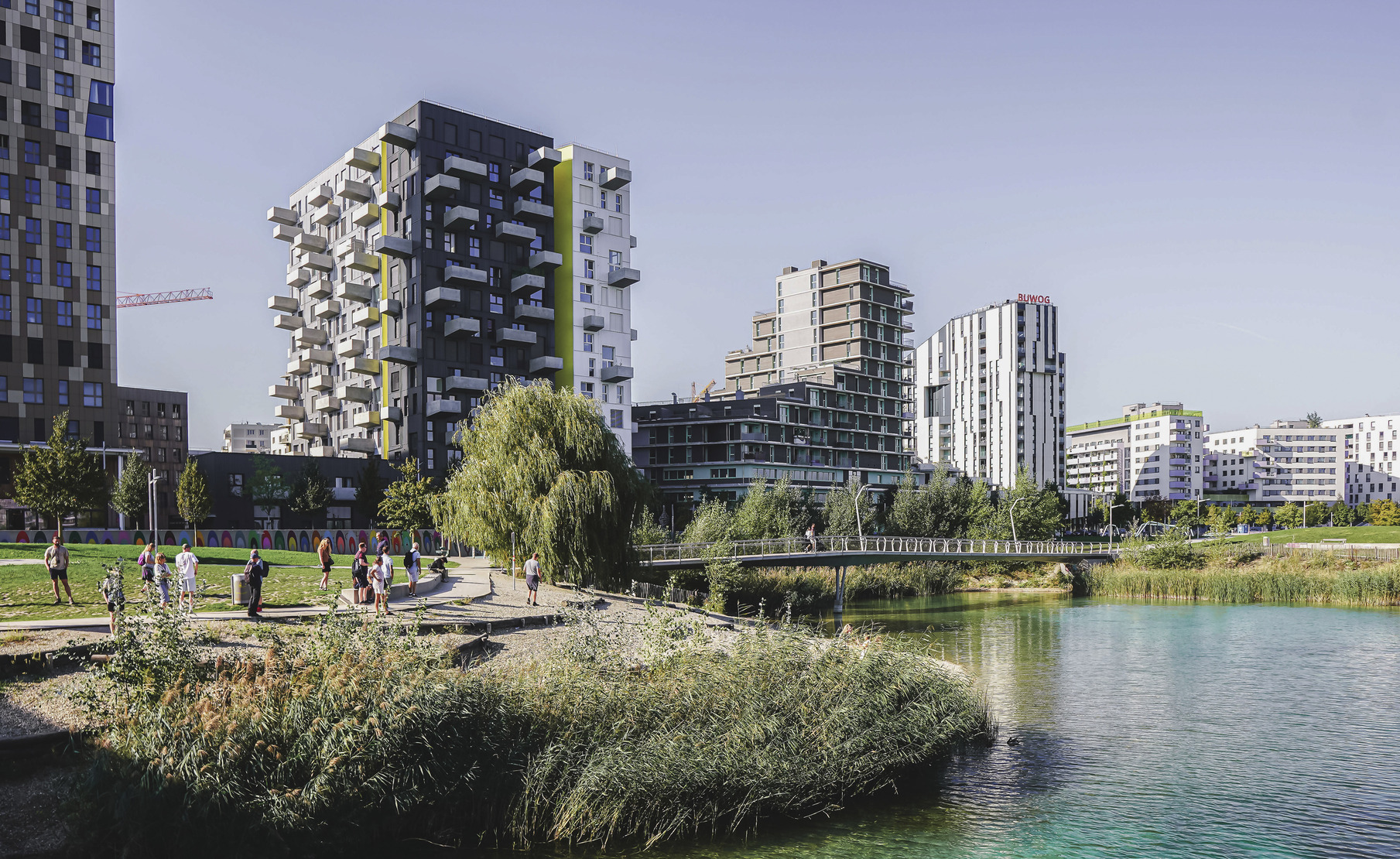
Seestadt Aspern, at 240 hectares one of the largest urban development areas in Europe, is defining new standards in urban planning. The Seestadt residents experience in their everyday lives how gender mainstreaming in urban planning is implemented here. An eye-catching signal to the outside world is the naming of public spaces after important women: Some as well-known as Jane Jacobs and Zaha Hadid. The garden architect Anna Plischke and 56 others can be discovered on site. This identity-creating initiative doubled the proportion of women in Vienna’s street names – perhaps a turning point for the city’s collective memory.
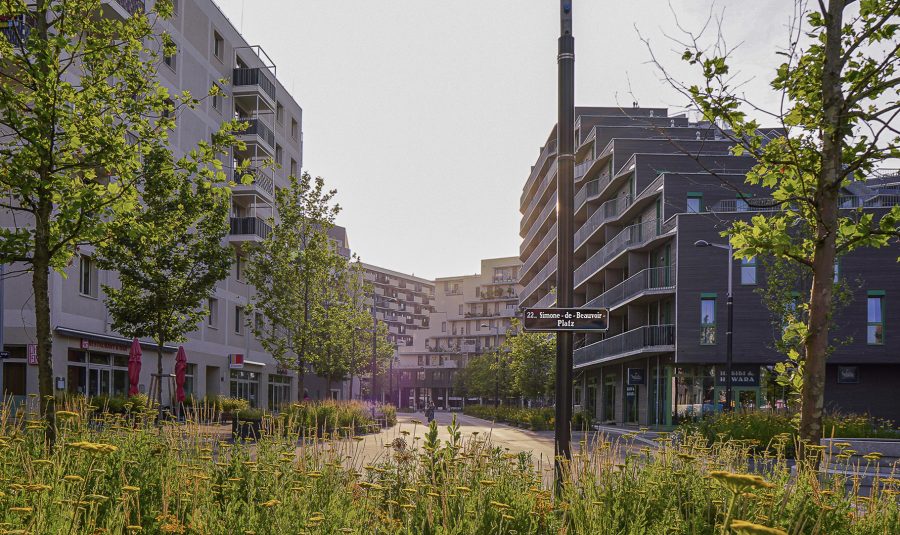
Simone-de-Beauvoir-Platz square in Seestadt Aspern, landscape: Krebs und Herde, architecture: nonconform, POS Architektur, Helen&Hard. Photo by: ©Architectural Tours Vienna
Architecture in the name of equality and diversity
For spatial planner Eva Kail, one of the leading experts in gender planning, making the diverse realities of women’s lives visible was the starting point for the development of planning guidelines in the 1990s. These were summarized in 2013 in the handbook “Gender Mainstreaming in Urban Planning and Development”. As a quality benchmark for equality, inclusion and everyday suitability, they accompany all planning processes of the city administration, which is why Seestadt is also in focus.
There are many women who contribute to shaping Seestadt in various roles since 2005, but only a few can be named here as examples. Caroline Palfy deserves credit as the developer of the HoHo Wien – without her vision and determined implementation, one of the world’s tallest timber-hybrid buildings would not exist.
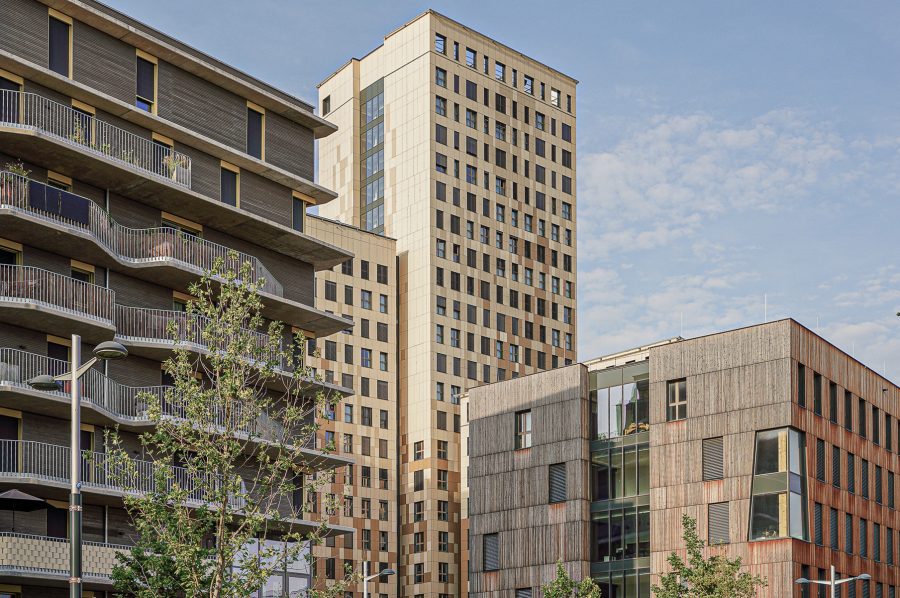
HoHo Wien, architecture: Rüdiger Lainer + Partner, developer: cetus, Caroline Palfy; on the left: Sirius, architecture: Helen&Hard. Photo by: ©Architectural Tours Vienna
Helle Søholt (Gehl Architects) is responsible for the “score of the public space”. This manual is the basis for the design of Hermine-Dasovsky-Platz by Anna Detzlhofer and Sabine Dessovic (D/D Landschaftsplanung).
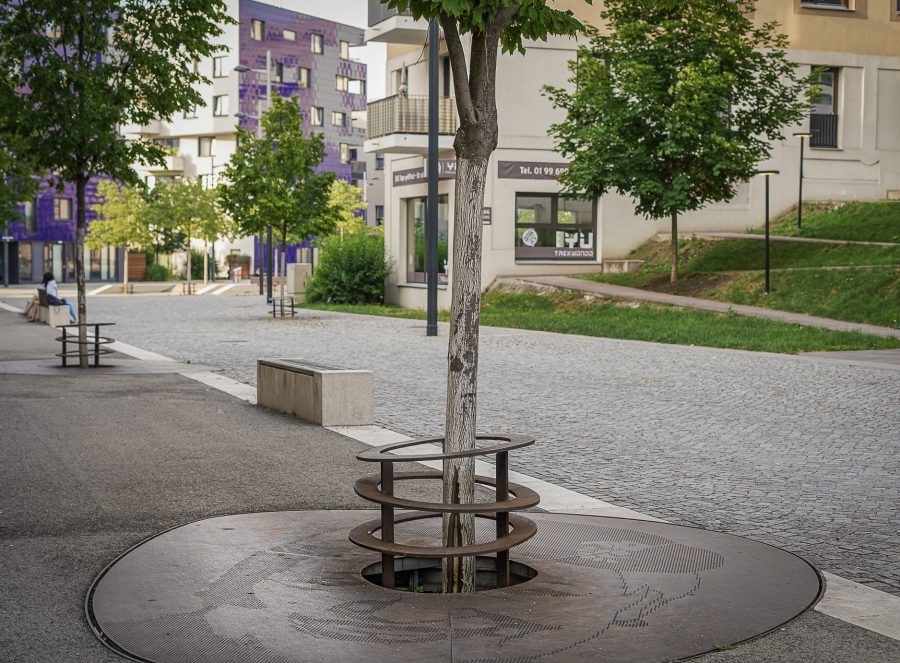
Hermine-Dasovsky-Platz square in Seestadt Aspern, landscape: D/D Landschaftsplanung. Photo by: ©Architectural Tours Vienna
In a competition, the “Seeparq” project by Ursula Schneider (POS Architektur) won out with its masterful combination of mixed use, energy concept and residential quality. You can get to know the works of these and other architects on our architectural tours – a refreshing source of discussion and inspiration.
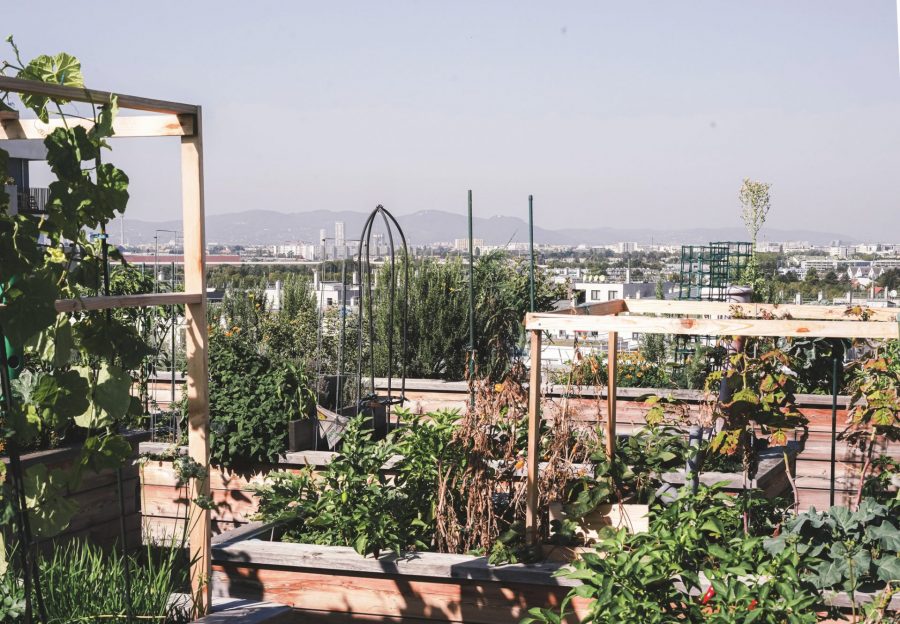
View from the shared rooftop garden, Seeparq, architecture: POS Architektur. Photo by: ©Architectural Tours Vienna
Planning quality in the reality check
The vision is to build a “city within a city” with all the qualities that we value in historic cities; sustainability, the common good, diversity, inclusion and gender mainstreaming are the guiding principles. By 2035, 25,000 people are expected to live here and around 20,000 will have a job or education place. A good third has been completed to date, plenty of material for expert tours, for explorations and comparisons at all scales and speeds.
Text by: Felicitas Konecny and Vanja Pandurevic, Architectural Tours Vienna
Seestadt Aspern:
https://www.aspern-seestadt.at/en/business_hub/planning__reality/master_plan
https://www.aspern-seestadt.at/city-news/die_ambition_ankommen_fuer_alle
Laura Vahl (Lavaland):
https://www.frauenbauenstadt.at/exhibition/laura-vahl/
Helen&Hard:
https://helenhard.no/
Caroline Palfy and Rüdiger Lainer Partner:
https://www.lainer.at/projekte/hoho-hoho-wien-holzhochhaus-1220-wien-2016/
POS Architektur:
https://www.pos-architecture.com/
D/D Landschaftsplanung:
https://www.dnd.at/
Helle Søholt (Gehl Architects):
https://www.gehlpeople.com/
Tovatt Architects:
https://tovatt.com/
nonconform:
https://www.nonconform.at/
Seestadt has a female face:
https://issuu.com/asperndieseestadtwiens/docs/dieseestadtistweiblich_sept2020






No Comments